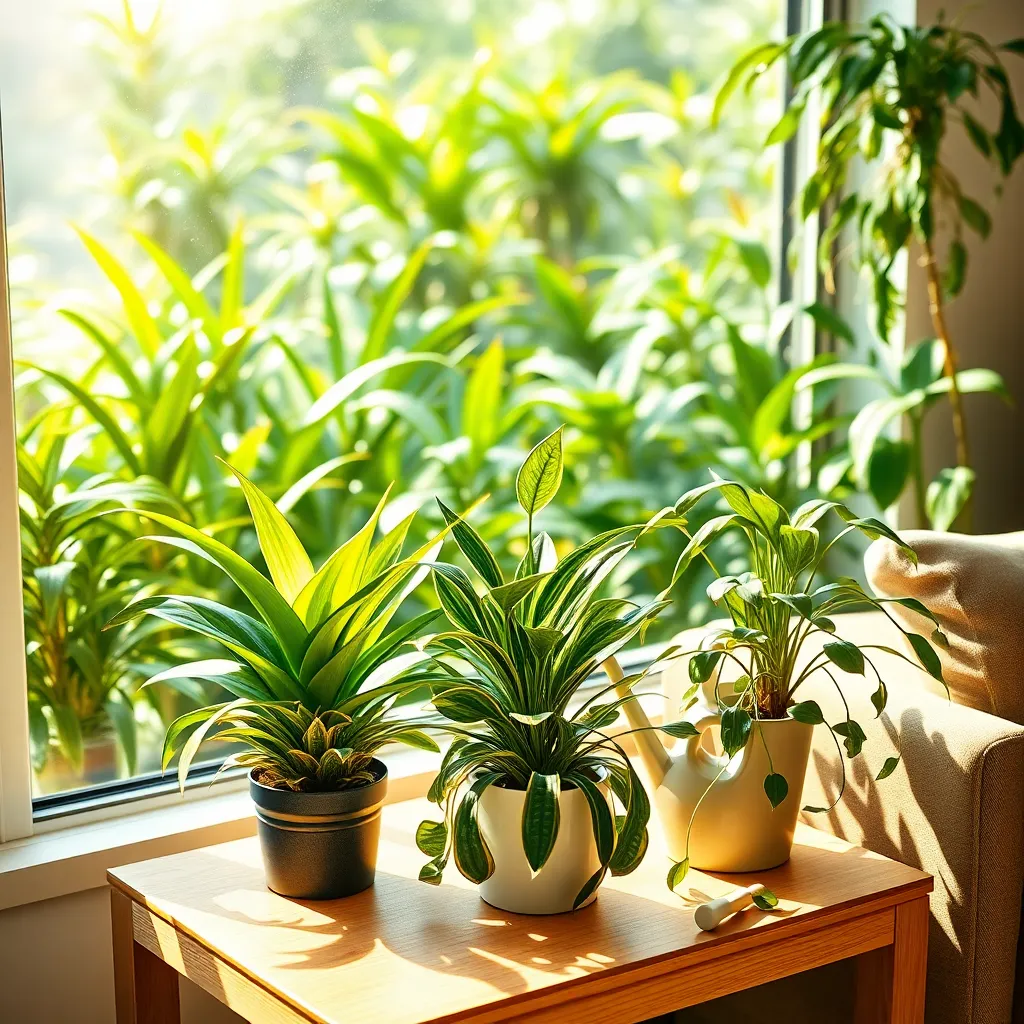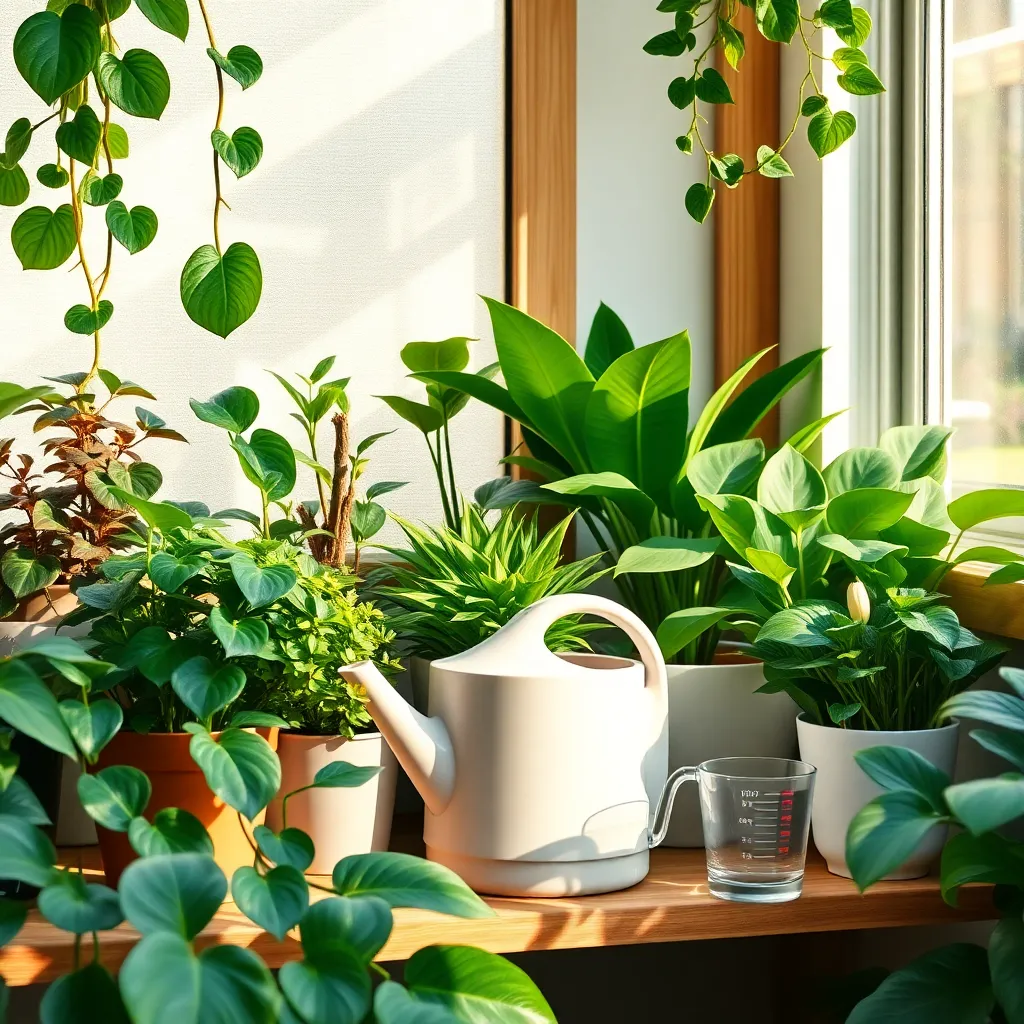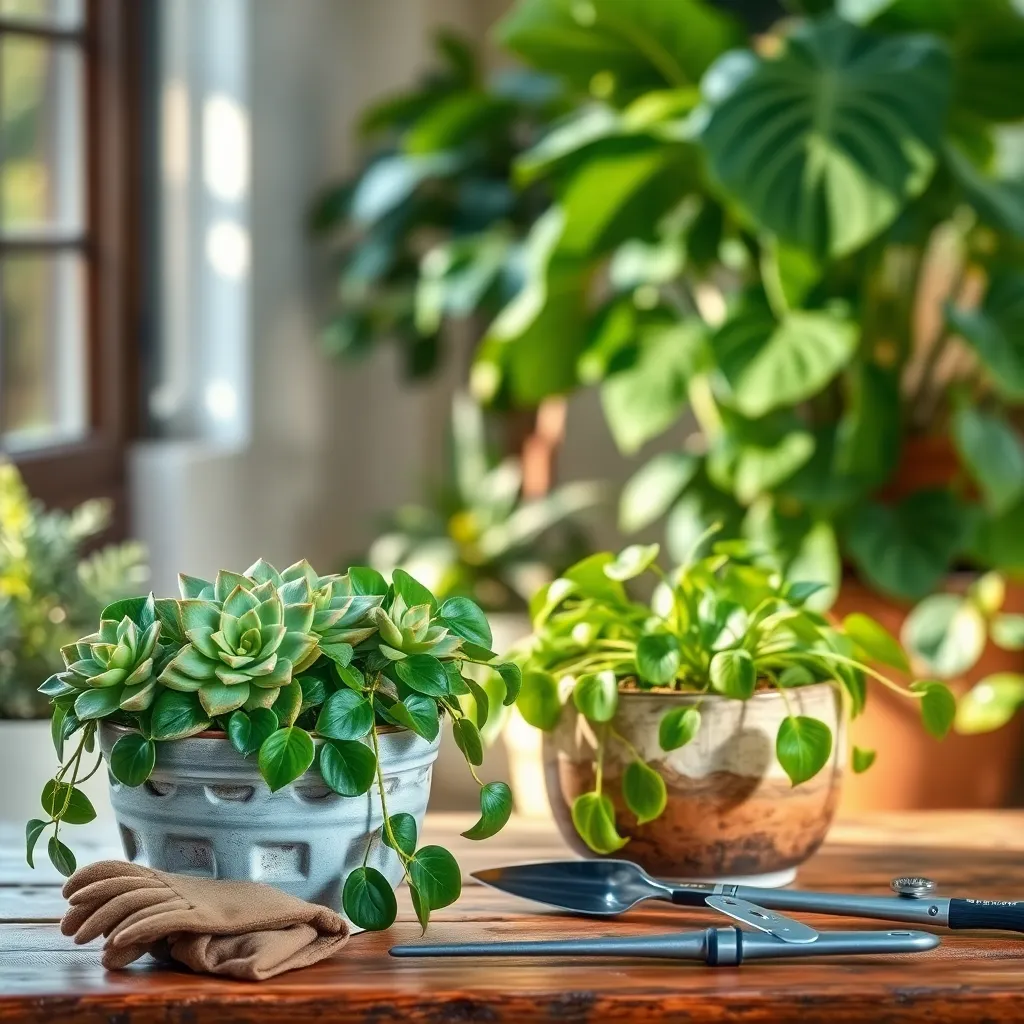In today’s fast-paced world, where every minute counts, the idea of nurturing houseplants might seem daunting to many. However, even the busiest among us can enjoy the verdant companionship of plants that demand little but offer so much in return. Whether you’re a seasoned gardener looking to expand your indoor jungle or a newcomer eager to bring a touch of green into your home, there’s a perfect, low-maintenance plant waiting to fit seamlessly into your lifestyle. Houseplants not only elevate the aesthetic of your living space but also purify the air and boost your mood, making them a worthwhile addition to any home.
This article is your gateway to discovering houseplants that thrive on minimal effort and time, perfect for those with hectic schedules. You’ll learn about resilient varieties that can withstand neglect and still flourish, ensuring that your home remains lush and lively without requiring constant attention. We’ll guide you through selecting the right plants, offer tips on basic care, and highlight the unique benefits each one brings to your environment. With this knowledge, you’ll find that integrating greenery into your life is not only achievable but also incredibly rewarding, no matter how packed your calendar may be.
Top Low-Maintenance Houseplants

For those with a hectic schedule, the Snake Plant (Sansevieria) is a resilient choice, known for its ability to thrive on neglect. It requires indirect sunlight and can tolerate low light conditions, making it perfect for a dim corner of your home.
Watering this plant is as simple as letting the soil dry out completely between waterings, roughly every two to three weeks. Overwatering can lead to root rot, so it’s crucial to err on the side of underwatering.
Choosing the right soil is vital for the Snake Plant’s health; a well-draining cactus or succulent mix is ideal. For those looking to boost growth, consider fertilizing with a balanced houseplant fertilizer once during the spring and summer months.
Another excellent low-maintenance choice is the ZZ Plant (Zamioculcas zamiifolia), which can handle periods of drought and low light. This plant’s waxy leaves not only add a touch of green to your home, but they also reflect light, making dark spaces appear brighter.
Watering the ZZ Plant is straightforward; allow the soil to dry out completely before watering, which typically means once a month. To avoid yellowing leaves, ensure your plant is never sitting in waterlogged soil.
For optimal growth, use a well-draining potting mix and place your ZZ Plant in a container with drainage holes. If you’re looking to propagate, simply divide the plant during repotting, which usually needs to be done every two to three years.
The Pothos (Epipremnum aureum) is another top pick for those who desire lush greenery with minimal effort. Its trailing vines can grow several feet long, adding a dramatic touch to any room, and they can be easily trimmed and propagated in water.
Place your Pothos in bright, indirect light for the best leaf color, but it will also tolerate low-light conditions. Water when the top inch of soil feels dry, and be cautious not to let it sit in water, as this can cause root rot.
To keep your Pothos thriving, use a general-purpose potting mix and consider feeding it with a balanced liquid fertilizer once a month during the growing season. Providing a moss pole can support longer vines, encouraging upward growth and fuller foliage.
Choosing Resilient Indoor Varieties

When selecting resilient indoor plant varieties, consider those that thrive with minimal attention. Snake plants, also known as Sansevieria, are perfect for beginners due to their ability to tolerate both low light and infrequent watering.
Another excellent choice is the ZZ plant (Zamioculcas zamiifolia), which can survive in low-light conditions and requires water only when the soil is completely dry. Ensure to plant it in a well-draining potting mix to prevent root rot and maintain its health with occasional dusting of its leaves.
Pothos is a versatile plant that can adapt to various light conditions, making it a great option for busy individuals. To encourage its trailing growth, prune it regularly and provide a general-purpose liquid fertilizer every couple of months.
If you’re looking for something a bit more unique, try the Cast Iron Plant (Aspidistra elatior), known for its remarkable durability. It thrives in low light and can even withstand temperature fluctuations, making it ideal for less than perfect indoor environments.
Simplified Watering Tips

When it comes to watering your houseplants, consistency is key. Most easy-to-care plants thrive when watered thoroughly, then allowed to dry out before the next watering.
To simplify your watering routine, use a moisture meter to determine when your plants truly need water. This tool removes the guesswork, ensuring you don’t under or overwater, which is a common issue with indoor plants.
Consider the needs of each plant species, as some prefer more moisture than others. For example, succulents like the jade plant or aloe vera should be watered less frequently, ideally every two to three weeks.
In contrast, tropical plants like the spider plant might require watering once a week, depending on humidity levels. Adjust your watering schedule based on the season, as plants generally need less water during their dormant winter months.
For advanced care, you might want to group plants with similar water needs together. This tactic helps streamline your watering routine and ensures each plant receives the right amount of hydration.
Light Needs for Easy Care

Understanding the light needs of your houseplants can drastically improve their health and your success as a gardener. Most easy-care plants prefer bright, indirect light, making them perfect for rooms with large windows but not under direct sunlight, which can scorch their leaves.
Consider the Snake Plant, which thrives in low light conditions but also tolerates brighter spots, making it highly adaptable. Place it in a spot where it can receive some natural light, but avoid direct exposure to prevent leaf burn.
For tropical plants like the Pothos, medium to low light is ideal, and they can even thrive under fluorescent lighting. If you’re placing them in a low-light area, make sure to rotate the plant every few weeks to promote even growth.
Utilize grow lights for areas where natural light is insufficient, especially during darker months. Choose LED grow lights, which are energy-efficient and can be set on a timer to simulate natural daylight cycles, ensuring your plants get the light they need without constant monitoring.
Quick Troubleshooting for Plant Issues

Identifying and resolving plant issues quickly can make a significant difference in maintaining healthy houseplants. Yellowing leaves often indicate overwatering or poor drainage; check if your pot has adequate drainage holes and allow the soil to dry out before the next watering.
Wilting can be a sign of either too much or too little water. Feel the soil about an inch below the surface—if it’s dry, your plant needs water; if it’s soggy, hold off on watering and ensure there’s good drainage.
Brown leaf tips can result from low humidity or over-fertilization. Increase humidity by placing a tray of water near your plant or misting it regularly, and reduce fertilization if you’re feeding more than once a month.
Pest problems, such as spider mites or aphids, can be tackled with natural solutions. Wipe the leaves with a damp cloth and consider using a homemade insecticidal soap by mixing a few drops of dish soap with water, applying it gently to affected areas.
Conclusion: Growing Success with These Plants
In our exploration of ‘Easy-to-Care Houseplants for Busy People,’ we’ve uncovered five key concepts that beautifully parallel nurturing relationships: choosing the right plant (or partner), understanding individual needs, consistent yet simple care, adapting to changes, and appreciating growth over time. Just as these houseplants thrive with minimal but thoughtful attention, so too can our relationships flourish with mindful, consistent nurturing.
As an actionable next step, consider selecting one relationship you wish to nurture this week and dedicate a few intentional moments to it, whether that means sending a thoughtful message or planning a simple, meaningful activity together.
Remember, investing small yet consistent efforts can lead to profound growth. To ensure these insights remain at your fingertips, save or bookmark this article now for easy reference.
As we look to the future, envision the success that comes from cultivating relationships with intention and care. With these simple yet impactful strategies, you’re well on your way to enjoying the lush, vibrant connections that enrich your life. Let this be the beginning of your journey toward enduring relational success.
